|
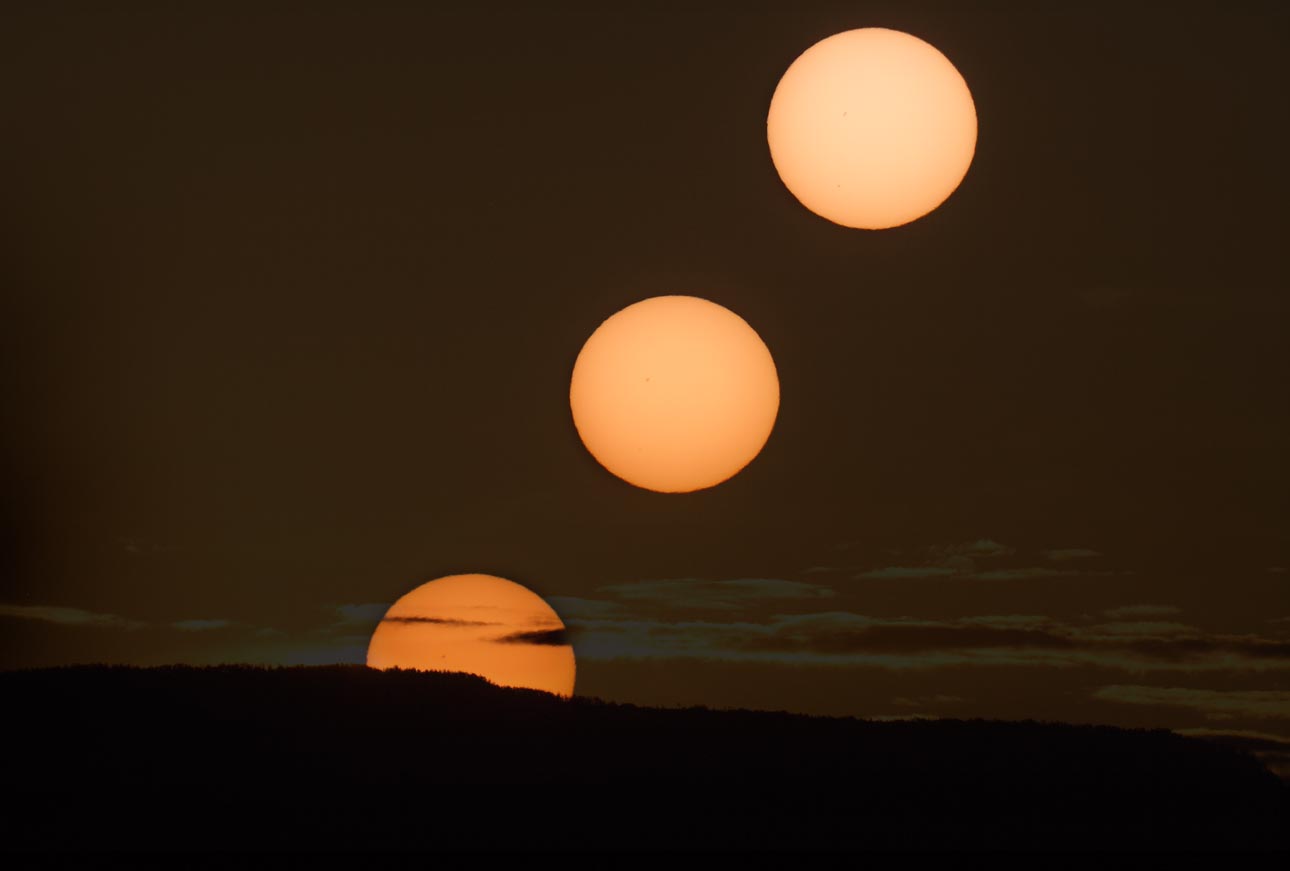
Above: Sunrise
sequence, spanning roughly 15 minutes of time. You can see the
sunspot above and to the left of the center of the Sun, and the
planet Mercury is near the bottom of the disk.
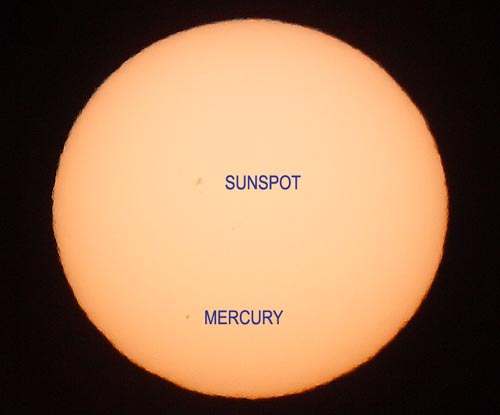
Above: Zoom in
on the center frame showing the details labeled.
Below - this is
a series of images at prime focus with the Lunt and DMK51 camera
in Hydrogen Alpha light showing the planet as a dark black dot.
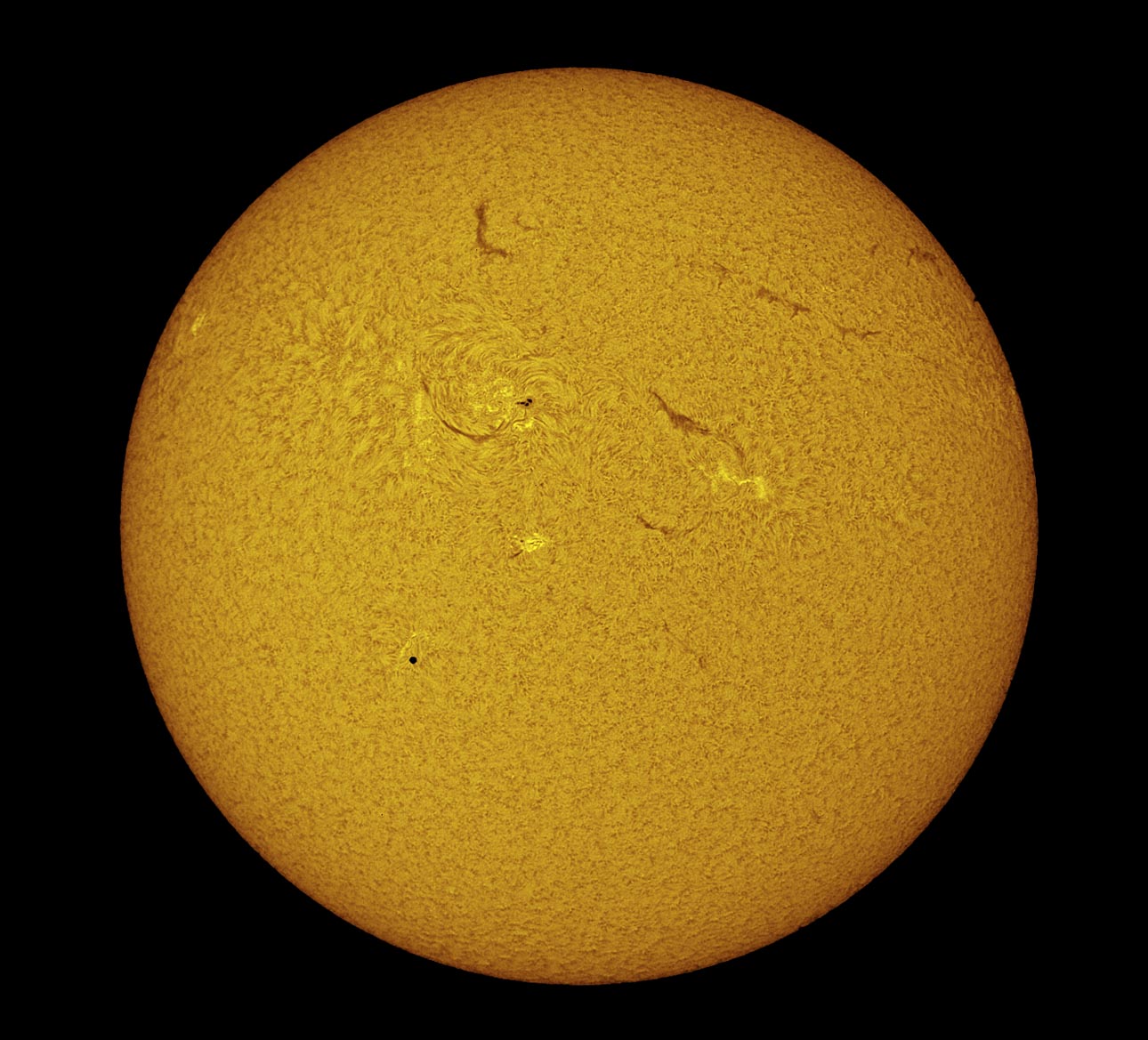
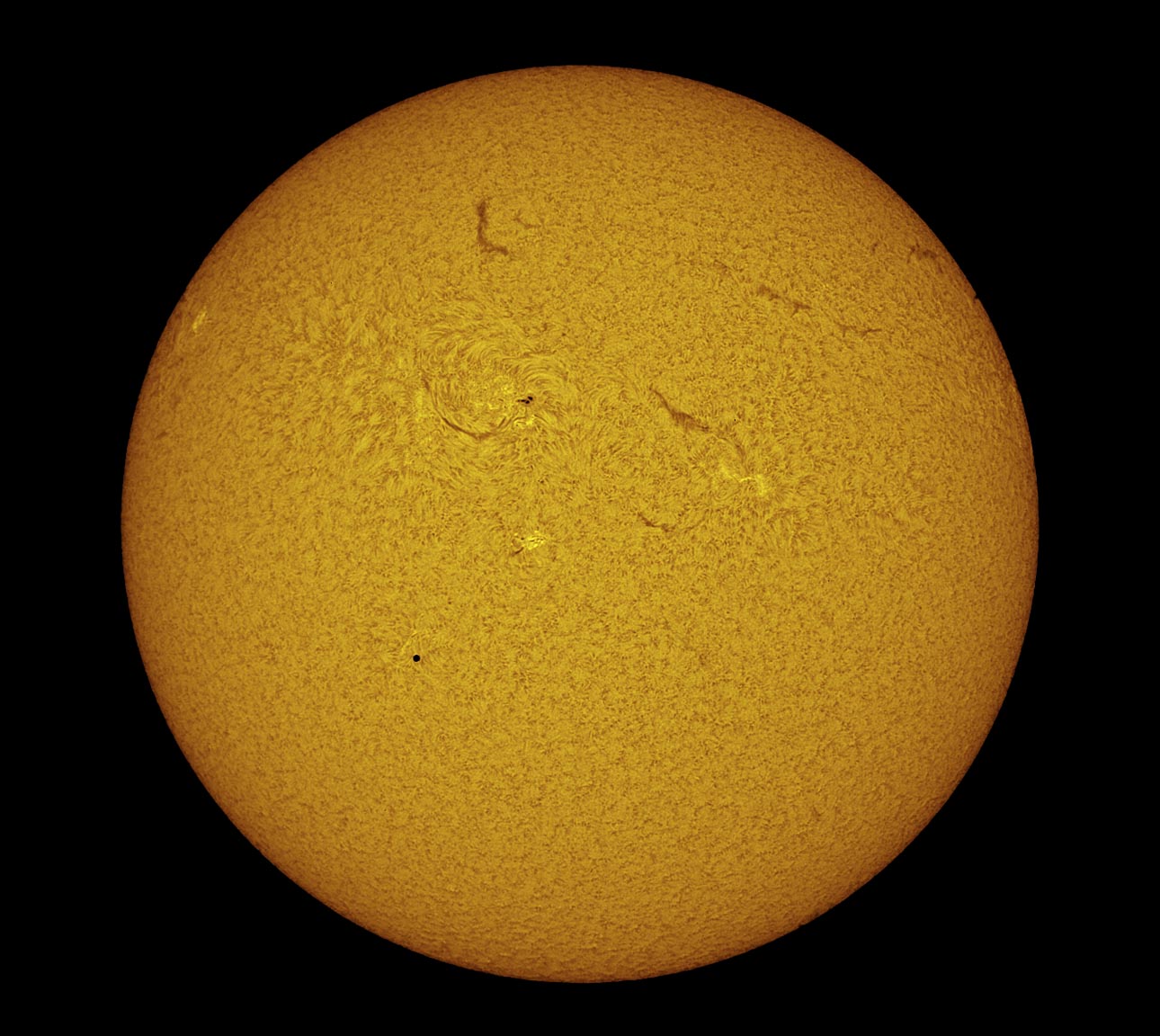
Below: The limb
of the sun showing prominences. Since the sun has to be greatly
over exposed to show this faint detail, the pure white disk was
blacked out like a total solar eclipse as to not be distracting.
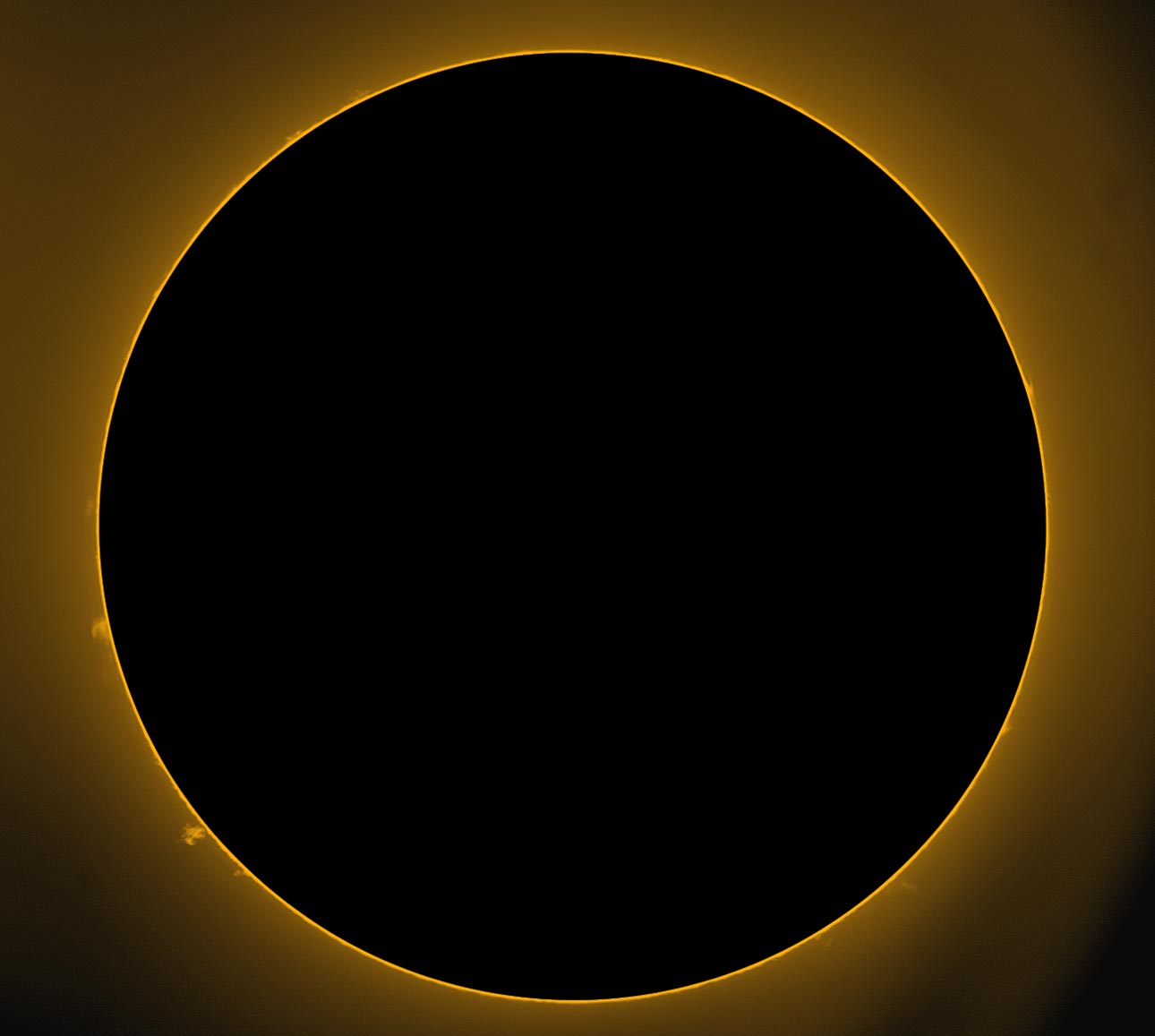
Below: Combining
both the prom shot and the disk shot shows the details at the
same time.
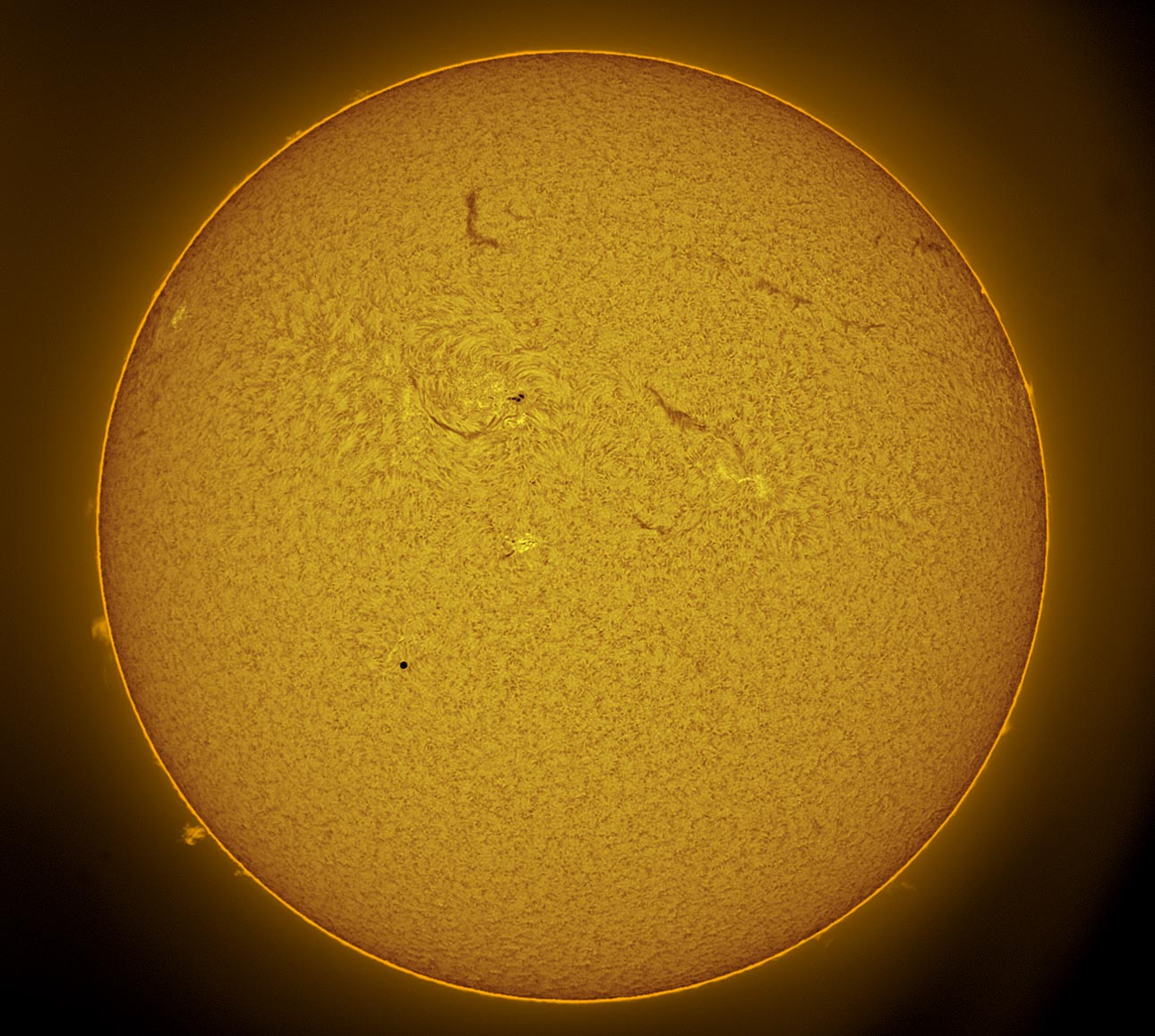
Below: More full
disk shots:
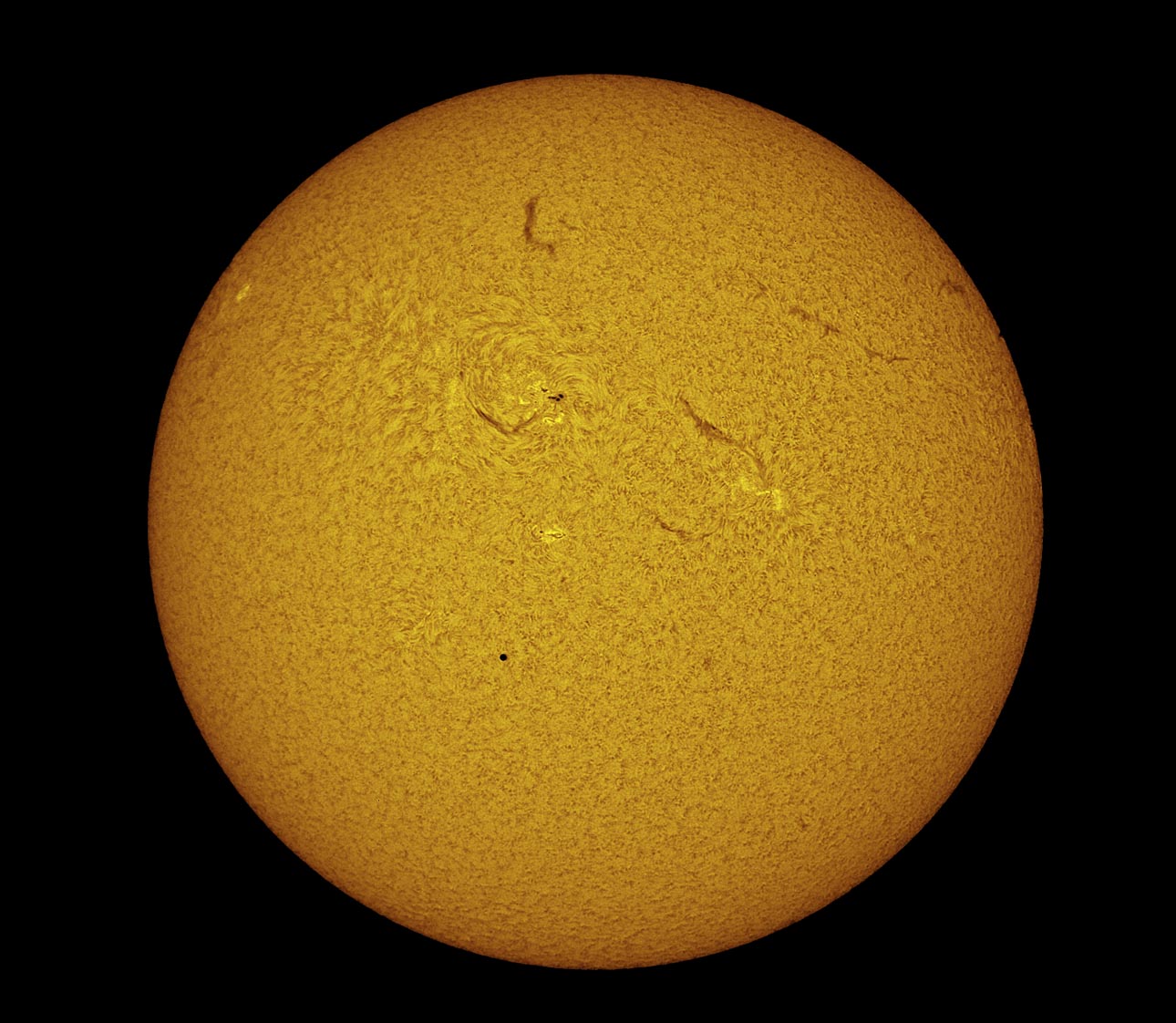
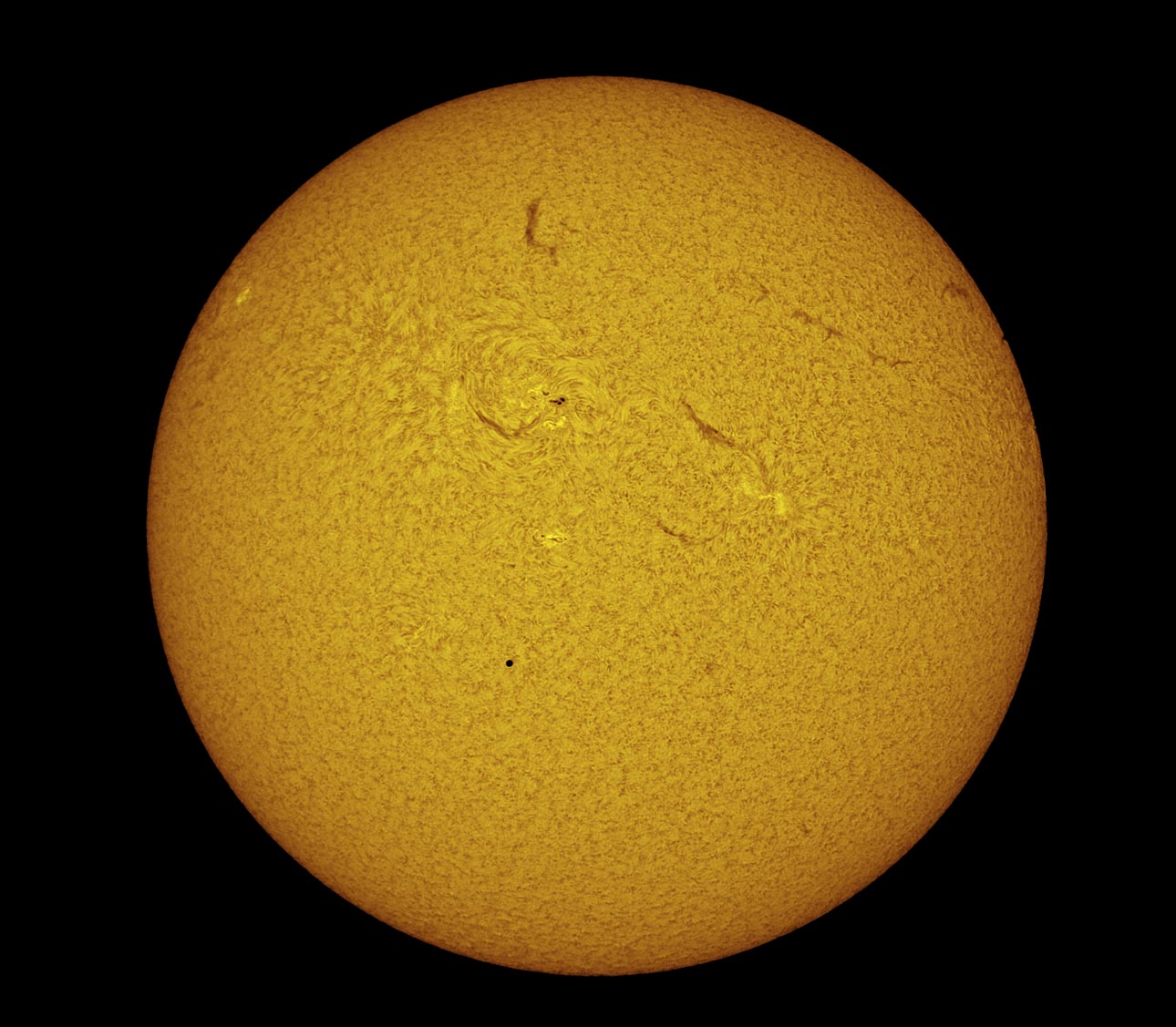
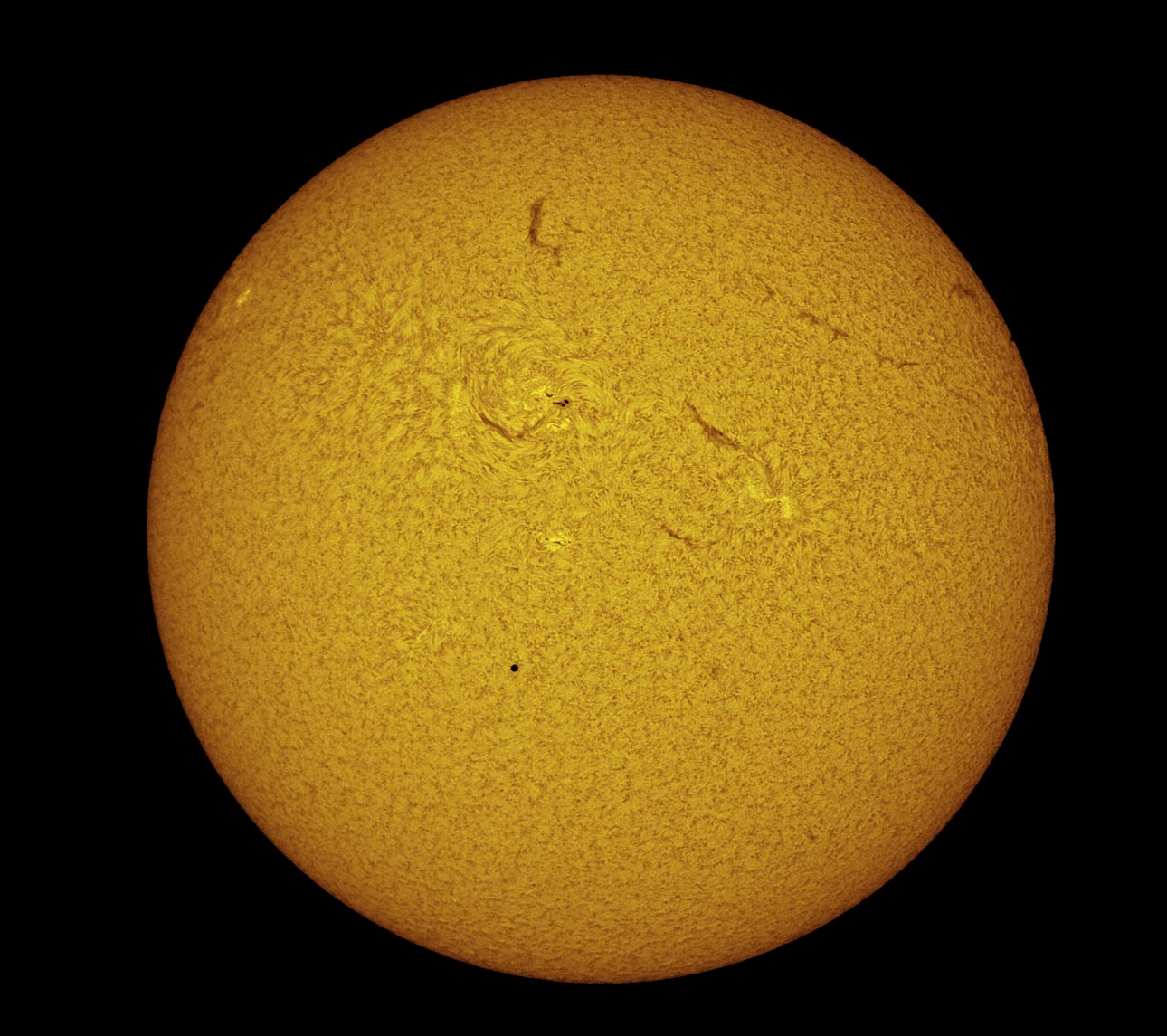
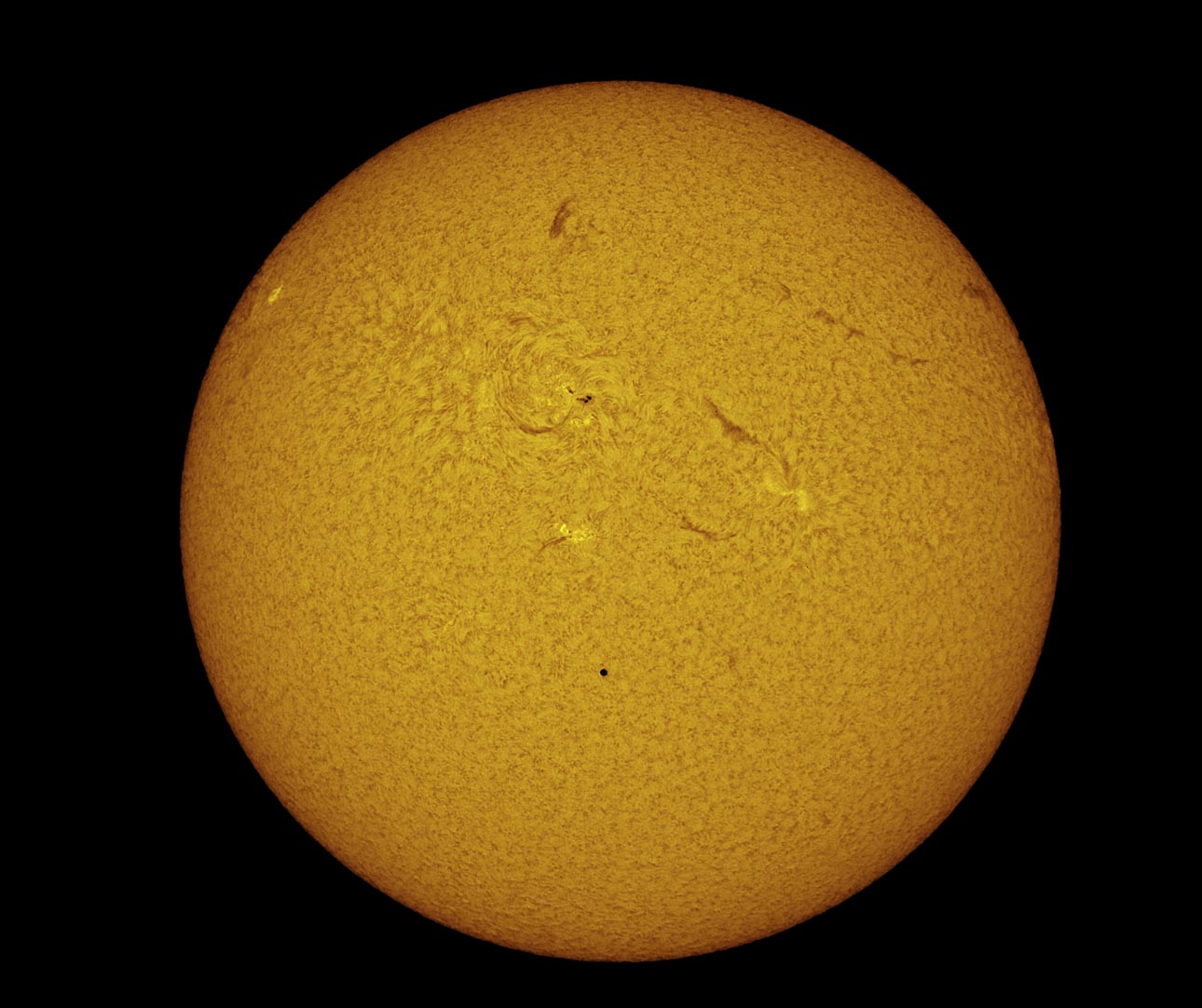
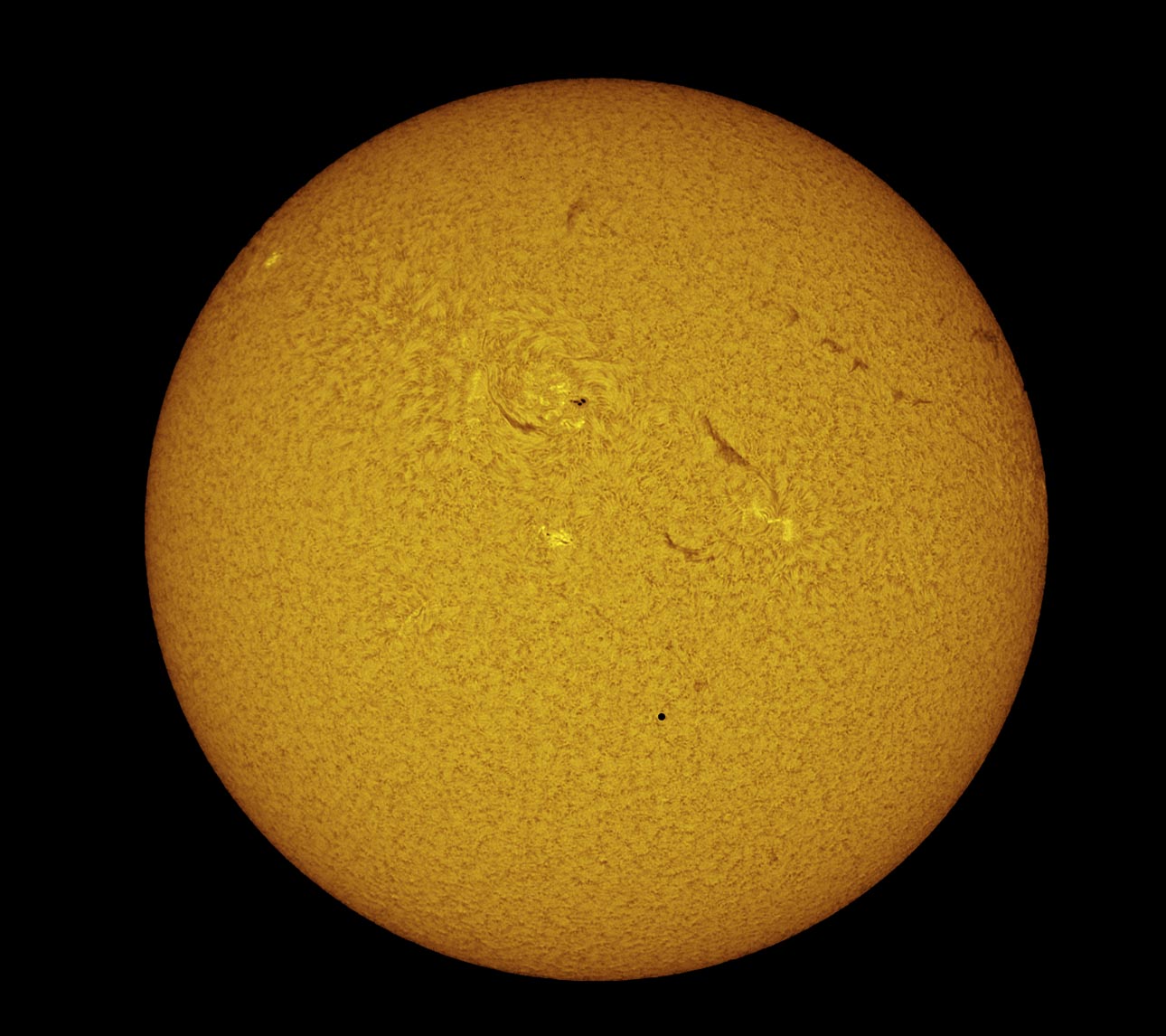
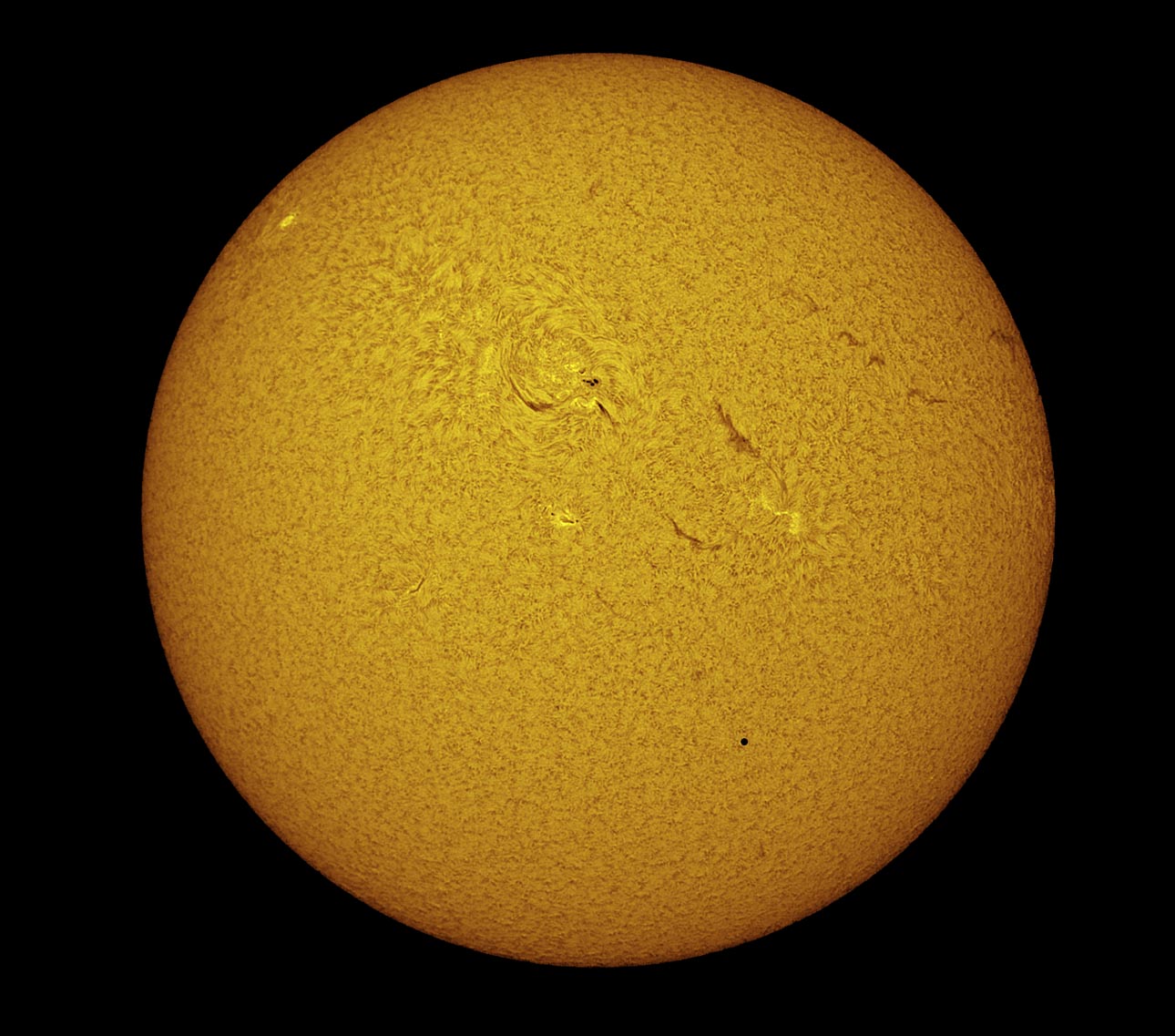
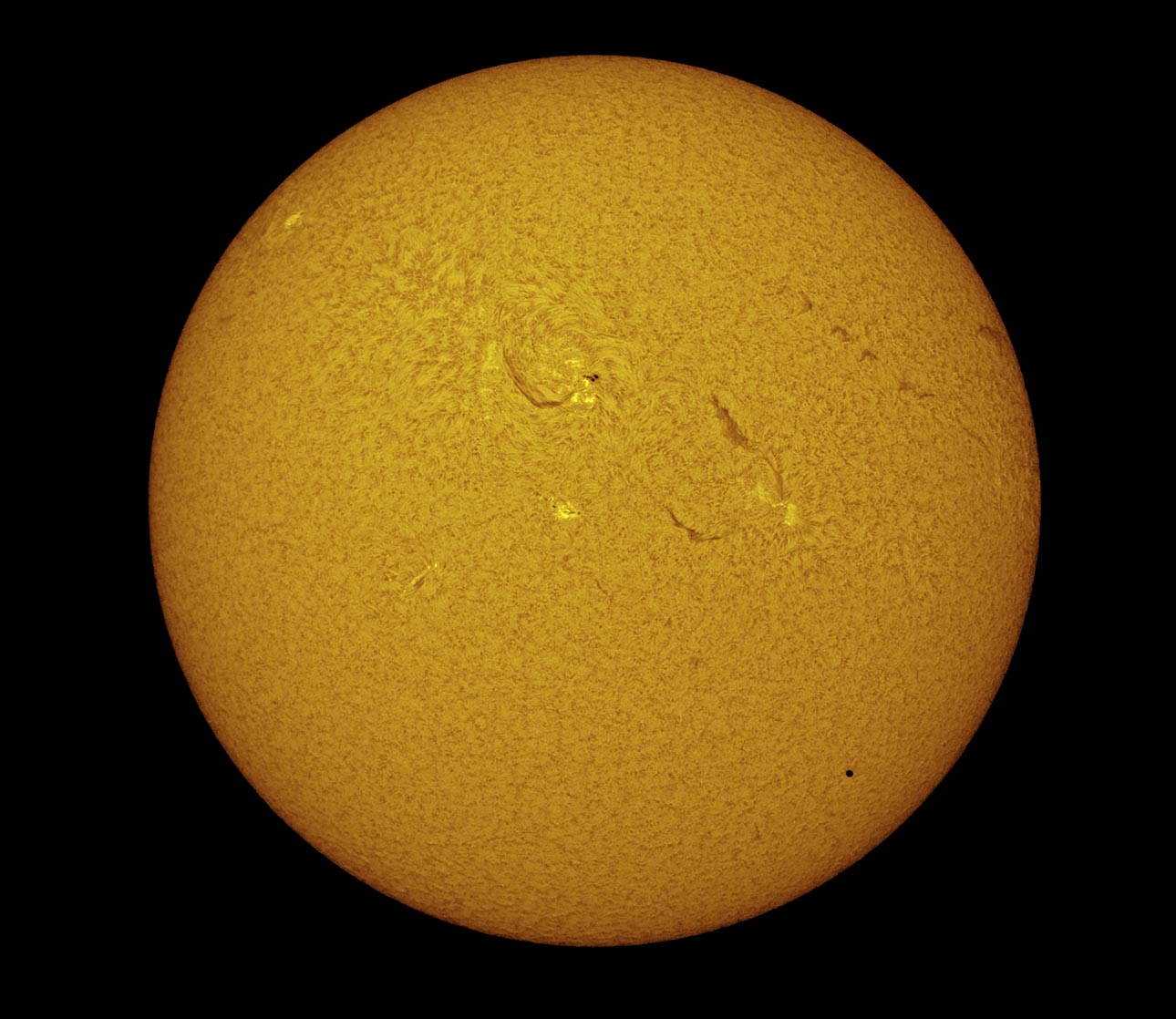
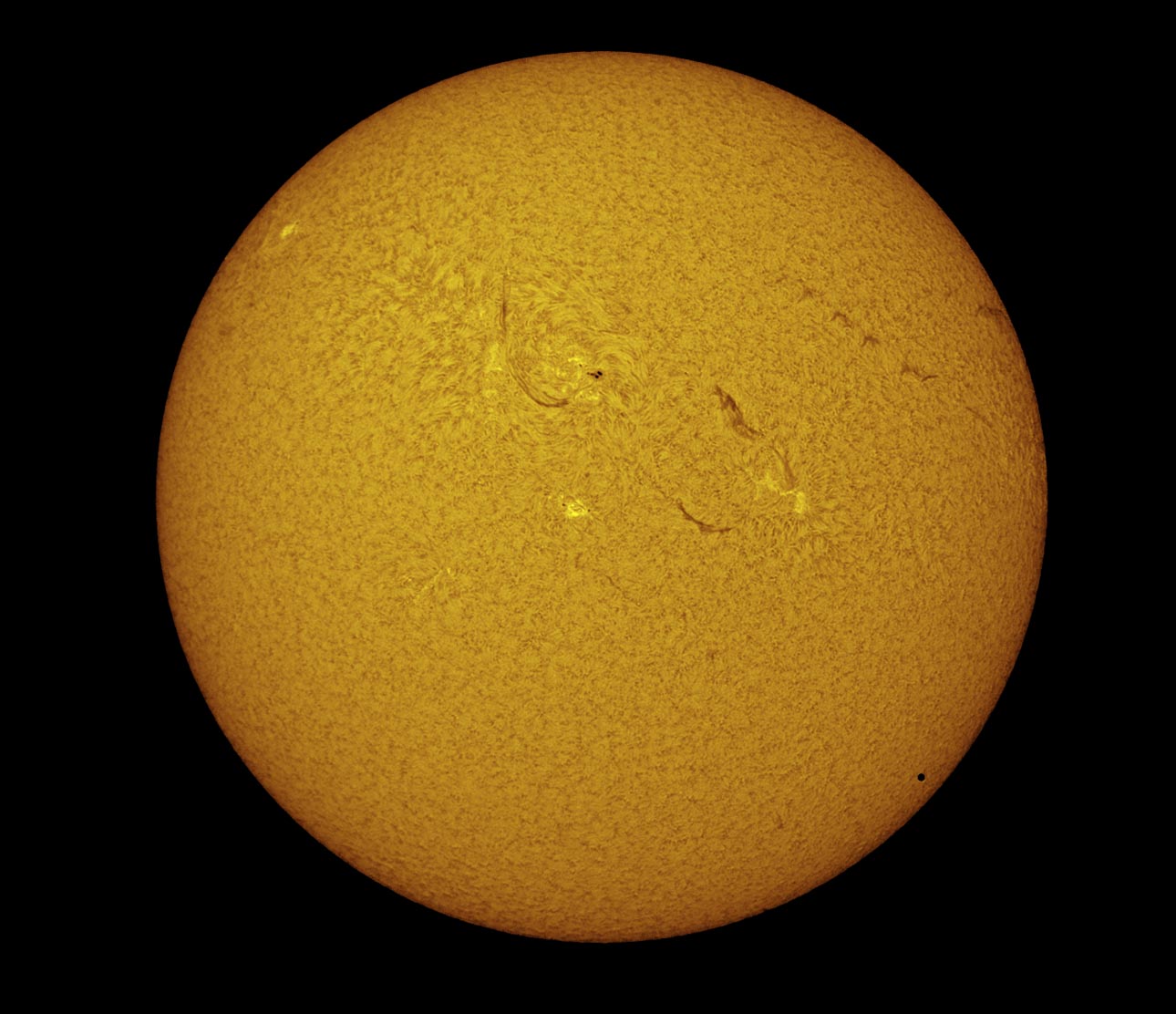
Below: Finally,
the disk of the planet moves off the sun, but can be still be
seen against the spicule layer on the limb. This layer extends
beyond the normal edge of the sun and appears to give the sun
a double edge. See the notch about half way down - thats the
last bit of the planet leaving the sun!
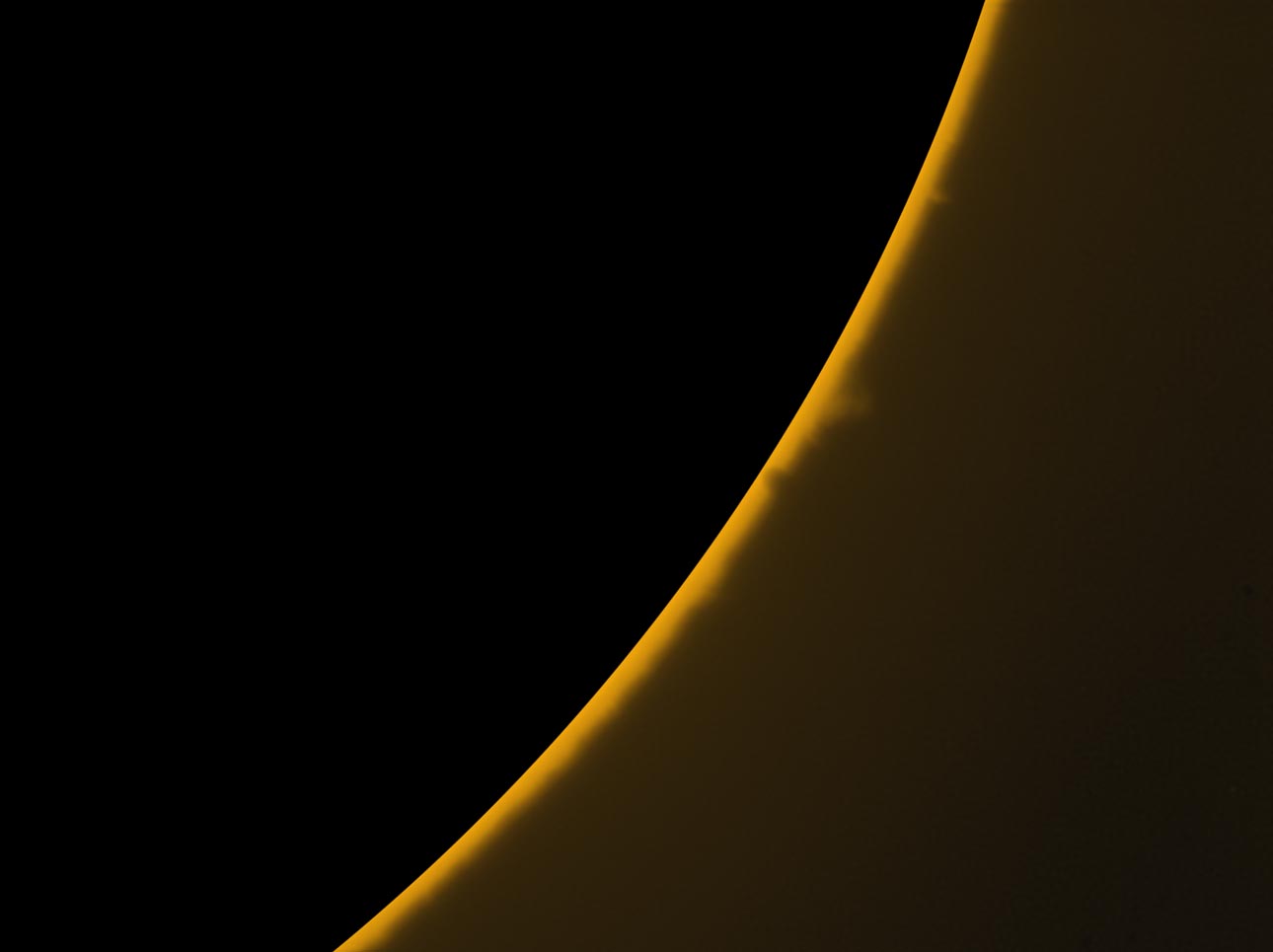
|